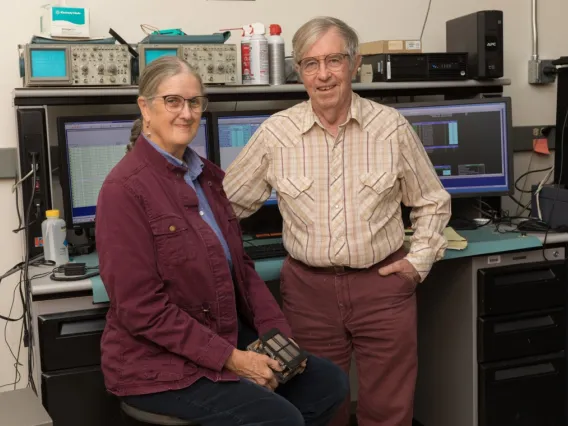
Meet the Husband-and-Wife Team that Helped Get Infrared Astronomy off the Ground
Astronomers Marcia and George Rieke helped the field of infrared astronomy flourish into a powerful discipline. They are key players in NASA's James Webb Space Telescope.
Meet the Husband-and-Wife Team that Helped Get Infrared Astronomy off the Ground
×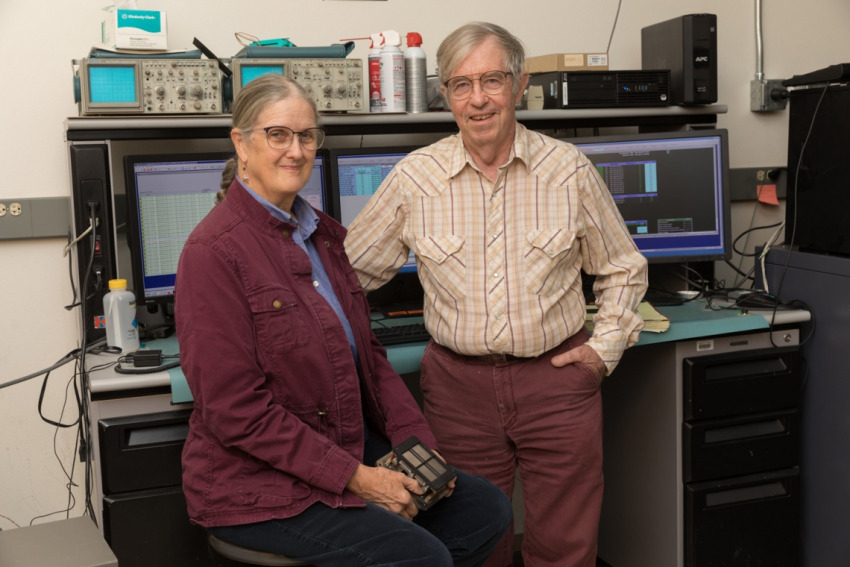
By Daniel Stolte, University Communications - December 16, 2021
NASA is preparing to launch its most ambitious astronomical observatory, the James Webb Space Telescope, to an outpost four times farther away from the Earth than the moon. With their respective research teams, Marcia and George Rieke, both Regents Professors in the University of Arizona's Steward Observatory, have been instrumental in developing technology that will enable the telescope to peer deeper back in time and space than any instrument before it.
The husband-and-wife research team also helped the field of infrared astronomy, once a niche endeavor fraught with extreme technical challenges, flourish into a powerful discipline that has allowed us to see the universe in ways that were deemed impossible 50 years ago.
Ahead of the launch, now planned for no earlier than Dec. 24, Lo Que Pasa spoke with the Riekes about what they hope to see with Webb, and how they became first involved with studying the cosmos – and with each other.
Now that the James Webb Telescope is stowed away in a rocket nose cone, awaiting launch, it's probably fair to say no human being will ever again lay hands on the instruments you designed and built. How do you feel?
George: When NASA built Spitzer (a previous generation space telescope), I remember being ushered into a clean room and there were the three instruments, including mine, all mounted on the cryostat (the device that keeps the telescope cool enough for operation). And I said a little prayer to myself: "Please never let me see these again." Because, obviously, I thought if I saw them again, it meant there was a big problem.
What are you most excited about?
Marcia: I'm excited to get off the ground, then I'm excited to have the solar array deploy half an hour later, and I'm excited to have midcourse correction. All those steps, I'm excited about seeing every one of them go by.
George: I'm excited for our teams of young researchers who are counting on JWST data to further their careers. They have spent years working with us to make this happen, and this is a big deal for them, especially after all these delays the project experienced, which can be demoralizing.
What are some of the science highlights that you're hoping to get with the James Webb Telescope?
George: We do not really understand the origin of quasars and active galactic nuclei, because some of them may be so hidden in dust that they just can't be found with current observatories. But they cannot hide from MIRI (the Mid-Infrared Instrument that George Rieke's group helped develop).
Marcia: I've always wanted to find the most distant galaxies and trace how galaxies changed from that epoch all the way down to the current times. My other goal is to look at the atmospheres of exoplanets and understand their composition.
George: JWST will only look a little bit further than we already have – with Hubble – BUT it will look much closer to the Big Bang. So, if you're counting from the Big Bang, it's going to get twice as close, rather than 5% further back than we have looked, and that is a very important distinction.
Marcia: On my optimistic days, I hope that we can see back to only 200 million years after the Big Bang.
Will Webb be able to look back to the time when we expect to see the very first galaxies, or were there galaxies even before that time?
Marcia: That's the $95 question.
George: No, that's the $10 billion question!
Marcia: We don't know.
George: As far back as we've been able to look, everything still looks pretty darn familiar. There are galaxies, there are stars and, yes, compared to modern galaxies, these early galaxies have slightly different shapes. They're a little smaller, but all that is kind of "so what." By getting twice as close to the Big Bang, we're really pushing back to the time when things SHOULD look different. But we don't know HOW they're different. Who knows what we'll find.
Can you tell us a little bit about how you both got started at the University of Arizona?
Marcia: My first job out of graduate school was here at the university. I was working with George as a postdoc, and I've not ever left. He was assistant professor at the time I showed up. When I was doing my thesis research, George arranged for the telescope and detector package that I used and he helped me figure out how to use it, so he was quite important for getting my thesis done.
George: I was offered a job here at the university, and I took it because I thought that it would broaden my science if I got into this new field. Just to show you how simple things were in those days compared to today: I went observing with a postdoc who worked for Frank Low (late Regents Professor Emeritus who helped establish modern infrared astronomy) at the time. After spending three nights observing with him, I went to the same telescope to start my own observations, and Frank drew a little diagram of how to find the telescope and he wished me luck. He did not come along to check things out. It was that simple. I could take the instrument, a very crude instrument detecting infrared light at 10 microns, to the telescope, mount it, get it going and get data. And when he says "simple," think of a single pixel that measures how bright a circular spot on the sky is. Now that's OK if you're measuring something that's a simple point source, like a single star. But if you want to map something so that you can make it look like a photo, you have to measure a spot, move the telescope, measure another spot, move the telescope and so on. It's very tedious way to make a photo.
Why was it initially difficult for the field of infrared astronomy to gain acceptance?
Marcia: Because astronomers are skeptical of other wavelengths.
George: I'm going to put it more succinctly: Nobody liked us.
Marcia: Part of it was that most of the people who started out doing infrared astronomy were actually not astronomers. They were physicists like us. We speak a different language. In one of the early papers that we published together, we used a strange unit of energy, the "watt." (Laughing) Astronomers weren't used to that.
George: Science works by paradigms; there's a structure of thinking. Scientists have learned to be very suspicious of anything outside their paradigm, and so, when there's a totally new initiative, like infrared astronomy, the optical astronomers were automatically suspicious that there's something wrong with this.
You obviously are a very successful husband-and-wife research team. What are the challenges? What are the perks?
Marcia: (Laughing) Well, the perks are that we get to go on trips together.
George: We have a lot to talk about on business, we have less to talk about on other things so, you know, in some sense it's a little limiting. But in another sense, it is very expansive because we can talk in depth about the things we're both working on.
Marcia: We read each other's papers and grant proposals, we tend to share a lot, we run ideas past each other and so on.
What does a typical debate between the two of you look like?
Marcia: I will say, "You forgot that this fact is XYZ," and he'll say, 'Oh, but you're misinterpreting THAT fact.' (Both laugh.)
Where are you going to be on launch day, and how are you going to celebrate?
Marcia: I hope that we'll be in the big lecture hall at Steward Observatory, and that we'll have our teams there and watch on the big screen. Since the launch is at 5:20 in the morning, I suspect we'll do the celebrating a bit later. We're going to have such a collective sigh of relief when we see that rocket go up.
George: We're having an argument about that. I think we should bring Champagne, but Marcia thinks it's too early to drink. (Both laugh.)
This interview originally appeared on the UA@Work website: https://uaatwork.arizona.edu/lqp/meet-riekes-husband-and-wife-team-help…
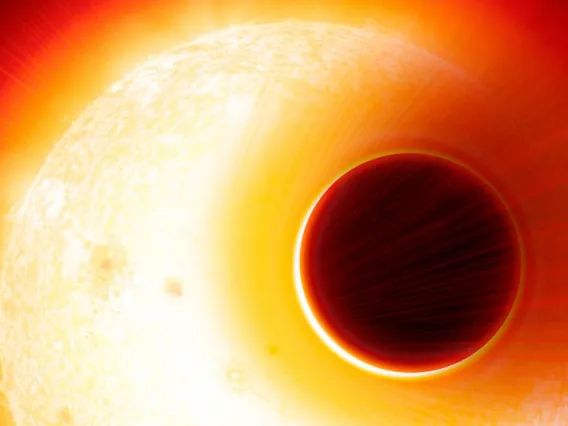
Astronomers Detect Signature of Magnetic Field on an Exoplanet
Researchers have identified the first signature of a magnetic field surrounding a planet outside of our solar system. Earth's magnetic field acts as a shield against energetic particles from the sun known as the solar wind. Magnetic fields could play similar roles on other planets.
Astronomers Detect Signature of Magnetic Field on an Exoplanet
×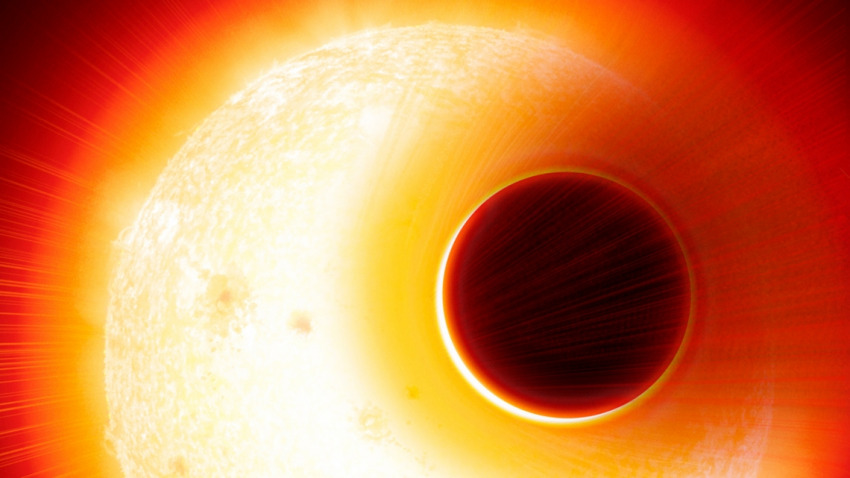
By University Communications - December 20, 2021
An international team of astronomers used data from the Hubble Space Telescope to discover the signature of a magnetic field in a planet outside our solar system. The finding, described in a paper in the journal Nature Astronomy, marks the first time such a feature has been seen on an exoplanet.
A magnetic field best explains the observations of an extended region of charged carbon particles that surround the planet and stream away from it in a long tail. Magnetic fields play a crucial role in protecting planetary atmospheres, so the ability to detect the magnetic fields of exoplanets is a significant step toward better understanding what these alien worlds may look like.
The team used Hubble to observe the exoplanet HAT-P-11b, a Neptune-sized planet 123 light-years from Earth, pass directly across the face of its host star six times in what is known as a "transit." The observations were made in the ultraviolet light spectrum, which is just beyond what the human eye can see.
Hubble detected carbon ions – charged particles that interact with magnetic fields – surrounding the planet in what is known as a magnetosphere. A magnetosphere is a region around a celestial object (such as Earth) that is formed by the object's interaction with the solar wind emitted by its host star.
"This is the first time the signature of an exoplanet's magnetic field has been directly detected on a planet outside our solar system," said Gilda Ballester, an adjunct research professor at the University of Arizona Lunar and Planetary Laboratory and one of the paper's co-authors. "A strong magnetic field on a planet like Earth can protect its atmosphere and surface from direct bombardment of the energetic particles that make up the solar wind. These processes heavily affect the evolution of life on a planet like Earth because the magnetic field shelters organisms from these energetic particles."
The discovery of HAT-P-11b's magnetosphere is a significant step toward an improved understanding of the habitability of an exoplanet. Not all planets and moons in our solar system have their own magnetic fields, and the connection between magnetic fields and a planet’s habitability still needs more study, according to the researchers.
"HAT-P-11 b has proven to be a very exciting target, because Hubble's UV transit observations have revealed a magnetosphere, seen as both an extended ion component around the planet and long tail of escaping ions," Ballester said, adding that this general method could be used to detect magnetospheres on a variety of exoplanets and to assess their role in potential habitability.
Ballester, a principal investigator of one of the Hubble Space Telescope programs that observed HAT-P-11b, contributed to the selection of this specific target for UV studies. A key discovery was the observation of carbon ions not only in a region surrounding the planet, but also extending in a long tail that streamed away from the planet at average speeds of 100,000 mph. The tail reached into space for at least 1 astronomical unit, the distance between Earth and sun.
Researchers led by the paper's first author, Lotfi Ben-Jaffel at the Institute of Astrophysics in Paris, then used 3D computer simulations to model interactions between the planet's uppermost atmospheric regions and magnetic field with the incoming solar wind.
"Just like Earth's magnetic field and its immediate space environment interact with the impinging solar wind, which consists of charged particles traveling at about 900,000 mph, there are interactions between HAT-P-11b’s magnetic field and its immediate space environment with the solar wind from its host star, and those are very complex," Ballester explained.
The physics in the magnetospheres of Earth and HAT-P-11b are the same; however, the exoplanet's close proximity to its star – just one-twentieth of the distance from the Earth to the sun – causes its upper atmosphere to warm and essentially "boil off" into space, resulting in the formation of the magnetotail.
Researchers also found that the metallicity of HAT-P-11b’s atmosphere – the number of chemical elements in an object that are heavier than hydrogen and helium – is lower than expected. In our solar system, the icy gas planets, Neptune and Uranus, are rich in metals but have weak magnetic fields, while the much larger gas planets, Jupiter and Saturn, have low metallicity and strong magnetic fields. HAT-P-11b's low atmospheric metallicity challenges current models of exoplanet formation, the authors say.
"Although HAT-P-11b's mass is only 8% of that of Jupiter, we think the exoplanet more resembles a mini-Jupiter than a Neptune," Ballester said. "The atmospheric composition we see on HAT-P-11b suggests that further work needs to be done to refine current theories of how certain exoplanets form in general."
The Hubble Space Telescope is a project of international cooperation between NASA and the European Space Agency. The observations were made through the following programs: Small HST Program #14625 dedicated to HAT-P-11b (principal investigator Gilda E. Ballester) and the HST Treasury Program #14767 named PanCET: The Panchromatic Comparative Exoplanetary Treasury program (co- principal investigators David K. Sing and Mercedes López-Morales).
The paper, "Signatures of Strong Magnetization and a Metal-Poor Atmosphere for a Neptune-Size Exoplanet" is published in the Dec. 16 issue of Nature Astronomy. Co-authors in addition to Ballester and Ben-Jaffel are Antonio García Muñoz, Panayotis Lavvas, David K. Sing, Jorge Sanz-Forcada, Ofer Cohen, Tiffany Kataria, Gregory W. Henry, Lars Buchahave, Thomas Mikal-Evans, Hannah R. Wakeford, and Mercedes López-Morales.

Here's How to See Comet Leonard, According to the UArizona Researcher Who Discovered It
The brightest comet of the year, named "Leonard" after the UArizona researcher who discovered it, is paying one last visit to Earth's neighborhood this month, before leaving the solar system forever.
Here's How to See Comet Leonard, According to the UArizona Researcher Who Discovered It
×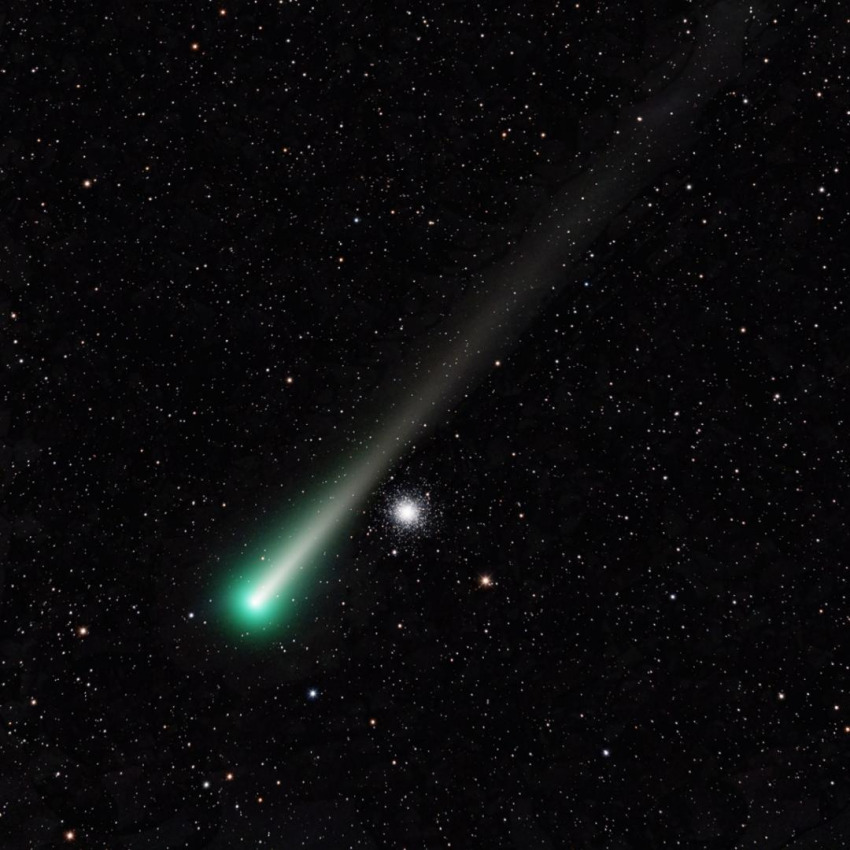
By Daniel Stolte, University Communications - December 13, 2021
Now is the best time to get a glimpse of Comet C/2021 A1, better known as Comet Leonard. It's named for its discoverer, Gregory Leonard, a senior research specialist at the University of Arizona Lunar and Planetary Laboratory.
Every night with clear skies, astronomers with LPL's Catalina Sky Survey scan the sky for near-Earth asteroids – space rocks with the potential of venturing close to Earth at some point.
During one such routine observation run on Jan. 3, Leonard spotted a fuzzy patch of light tracking across the starfield background in a sequence of four images taken with the 1.5-meter telescope at the summit of Mount Lemmon. The dot's fuzzy appearance, combined with the fact that it had a tail, was a dead giveaway that he was looking at a comet, he said.
"The fact that the tail showed up in those images was remarkable, considering that the comet was about 465 million miles out at that point, about the same distance as Jupiter," he said.
Most long-period comets such as Comet Leonard hail from the Oort Cloud, a vast region surrounding our solar system at distances no spacecraft has ever come close to, not even the two Voyager probes, which have officially left the solar system and entered interstellar space.
Out there, suspended in the vast interstellar void where temperatures are close to absolute zero, are billions of orbiting comets balanced in a delicate tug-of-war of extremely weak gravitational forces between the distant sun and the rest of the Milky Way. Slight perturbations of this precarious balance of forces may nudge a chunk of ice and dust out of the Oort Cloud and send it onto a trajectory toward the sun.
"When the tug-of-war is won by the gravity of our solar system, an object may start moving inwards, accelerating as it gets closer to the sun," Leonard explained.
A Meteor Shower on Venus?
Comet Leonard made its closest approach to Earth on Dec. 12, at which point it was still more than 21 million miles away from Earth, about 88 times the distance from Earth to the moon. The comet currently can be spotted low in the evening sky, just after sunset.
On Dec. 17, the comet is expected to pass very close to Venus in what Leonard calls a cosmic close call.
"There is a small chance Venus will pass close enough to the comet's path where it may pick up some dust grains in its atmosphere, producing a meteor shower on our neighboring planet," he said.
Speaking of Venus, the "evening star," as it's sometimes called, is currently prominently visible in the southwestern sky just around sunset and might make for a useful guidepost, helping sky watchers to locate the comet, Leonard said.
"Beginning Dec. 13, this comet will appear very low above the horizon just after sunset," Leonard said. "It will skim across the west-southwestern horizon between now up until around Christmastime. The fact that it's so close to the horizon makes this comet a bit challenging to observe."
Still, Leonard encourages people to give it a try, explaining that observers may benefit from an effect called forward scattering: As it comes closer to the sun, the comet's tail and "coma" – a cloud of dust and gas – may scatter the sunlight from behind, potentially dramatically enhancing the comet's brightness.
"I feel there is going to be something to be seen even for the casual observer," Leonard said. "Find yourself a dark sky with a good view of the horizon, bring binoculars and I think you may be rewarded."
Not its First Visit to Earth's Neighborhood
Comet Leonard is no stranger to the inner solar system. About 80,000 years ago, Neanderthals may have looked up to the night sky and pointed out the strange star with its bright tail to each other. Its first encounter with the sun flung Comet Leonard back into the depths of space, only to turn around about 40,000 years later and embark on another trip toward the sun. On this visit, however, Comet Leonard is traveling without a return ticket.
"This is the last time we are going to see the comet," Leonard said. "It's speeding along at escape velocity, 44 miles per second. After its slingshot around the sun, it will be ejected from our solar system, and it may stumble into another star system millions of years from now." Two domes house the telescopes at Catalina Sky Survey's Mount Lemmon station.
Leonard said it is unusual for a comet to burst into activity as far out from the sun as this one did when it first showed up in Catalina Sky Survey's 1.5-meter reflector telescope, the workhorse discovery telescope for near-Earth asteroid and many comets. At the time, it was too far out for the sun to heat water ice – the main ingredient of most comets – into a streaming tail of vapor.
"Something other than water ice was being excited by the solar radiation and producing this tenuous atmosphere – possibly frozen carbon dioxide, carbon monoxide or ammonia ices," he said.
The comet was extremely faint, about 400,000 times dimmer than what human eyes can see, and was only picked up thanks to the combination of the telescope's large optics and exquisitely sensitive camera. The Catalina Sky Survey operates four telescopes in the Santa Catalina Mountains north of Tucson – one pair of telescopes on Mount Bigelow and another pair on the summit of Mt. Lemmon.
Cherished for their appearance, comets are of great interest because they function as messengers from the solar system's deep past. Preserving material left over from when the sun and planets were born, these "dirty snowballs," as they are sometimes called, contain clues to the processes that were at work when the solar system formed.
"As much as we have great science on comets, they're still highly unpredictable with respect to their size, shape, chemical makeup and behavior," Leonard said. "A wise and famous comet discoverer once said: 'Comets are like cats – both have tails and both do precisely what they want.'"
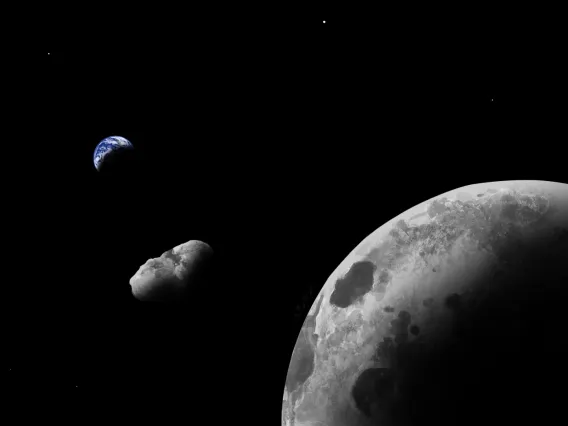
Near-Earth Asteroid Might be a Lost Fragment of the Moon
A team of UArizona-led researchers think that the near-Earth asteroid Kamo`oalewa might actually be a miniature moon.Near-Earth Asteroid Might be a Lost Fragment of the Moon
×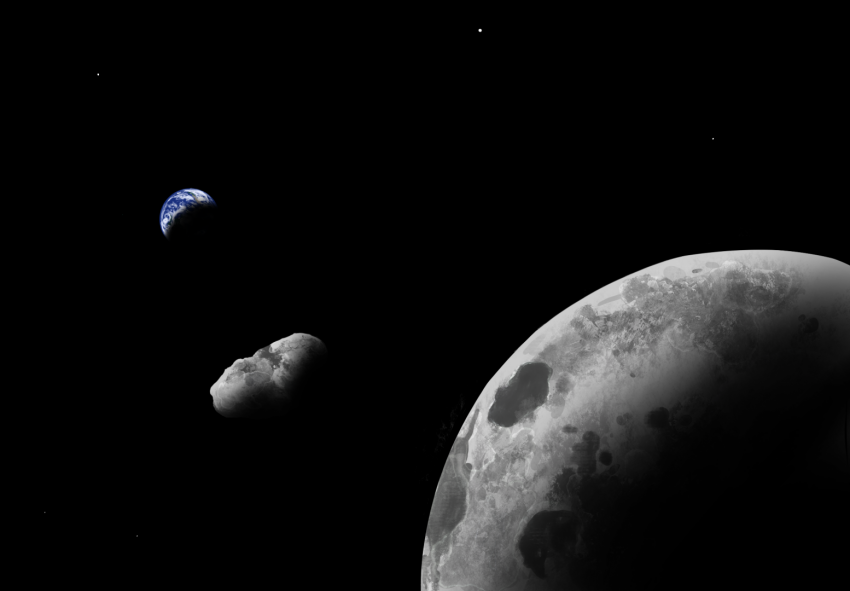
An artist's impression of Earth quasi-satellite Kamo`oalewa near the Earth-moon system. Using the Large Binocular Telescope, astronomers have shown that it might be a lost fragment of the moon.Addy Graham/University of Arizona
A team of UArizona-led researchers think that the near-Earth asteroid Kamo`oalewa might actually be a miniature moon.
A near-Earth asteroid named Kamo`oalewa could be a fragment of our moon, according to a paper published today in Communications Earth and Environment by a team of astronomers led by the University of Arizona.
Kamo`oalewa is a quasi-satellite – a subcategory of near-Earth asteroids that orbit the sun but remain relatively close to Earth. Little is known about these objects because they are faint and difficult to observe. Kamo`oalewa was discovered by the PanSTARRS telescope in Hawaii in 2016, and the name – found in a Hawaiian creation chant – alludes to an offspring that travels on its own. The asteroid is roughly the size of a Ferris wheel – between 150 and 190 feet in diameter – and gets as close as about 9 million miles from Earth.
Due to its orbit, Kamo`oalewa can only be observed from Earth for a few weeks every April. Its relatively small size means that it can only be seen with one of the largest telescopes on Earth. Using the UArizona-managed Large Binocular Telescope on Mount Graham in southern Arizona, a team of astronomers led by UArizona planetary sciences graduate student Ben Sharkey found that Kamo`oalewa's pattern of reflected light, called a spectrum, matches lunar rocks from NASA's Apollo missions, suggesting it originated from the moon.
Researchers aren't yet be sure how the asteroid may have broken loose from the moon. That's partly because there are no other known asteroids with lunar origins.
"I looked through every near-Earth asteroid spectrum we had access to, and nothing matched," said Sharkey, the paper's lead author.
A debate over Kamo`oalewa's origins between Sharkey and his adviser, UArizona associate professor of lunar and planetary sciences Vishnu Reddy, led to another three years of hunting for a plausible explanation.
"We doubted ourselves to death," said Reddy, a co-author who started the project in 2016. After missing the chance to observe the asteroid in April 2020 due to a COVID-19 shutdown of the Large Binocular Telescope, the team found the final piece of the puzzle in 2021.
"This spring, we got much needed follow-up observations and went, 'Wow it is real,'" Sharkey said. "It's easier to explain with the moon than other ideas."
Kamo`oalewa's orbit is another clue to its lunar origins. Its orbit is similar to the Earth's, but with the slightest tilt. Its orbit is also not typical of near-Earth asteroids, according to study co-author Renu Malhotra, a UArizona planetary sciences professor who led the orbit analysis portion of the study.
"It is very unlikely that a garden-variety near-Earth asteroid would spontaneously move into a quasi-satellite orbit like Kamo`oalewa's," said Malhotra, whose lab is working on a paper to further investigate the asteroid's origins. "It will not remain in this particular orbit for very long, only about 300 years in the future, and we estimate that it arrived in this orbit about 500 years ago."
Kamo`oalewa is about 4 million times fainter than the faintest star the human eye can see in a dark sky.
"These challenging observations were enabled by the immense light-gathering power of the twin 8.4-meter telescopes of the Large Binocular Telescope," said study co-author Al Conrad, a staff scientist for the telescope.
The study also included data from the Lowell Discovery Telescope in Flagstaff, Arizona. Other co-authors on the paper include Olga Kuhn, Christian Veillet, Barry Rothberg and David Thompson from the Large Binocular Telescope; Audrey Thirouin from Lowell Observatory; and Juan Sanchez from the Planetary Science Institute in Tucson. The research was funded by NASA's Near-Earth Object Observations Program.
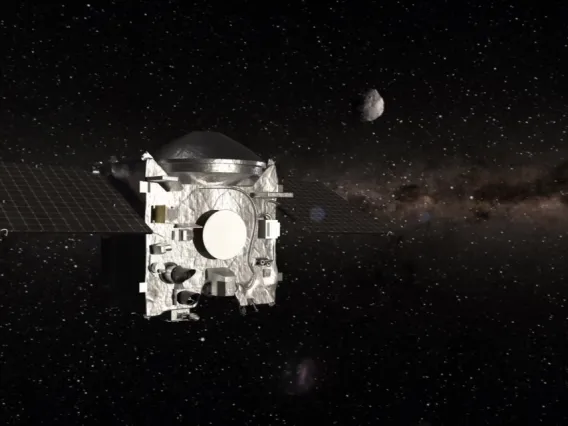
UArizona Ranked in Top 10 for Space Science on Latest US News Best Global Universities List
The University of Arizona has once again been recognized as one of the world's top 100 research institutions by U.S. News & World Report.
UArizona Ranked in Top 10 for Space Science on Latest US News Best Global Universities List
×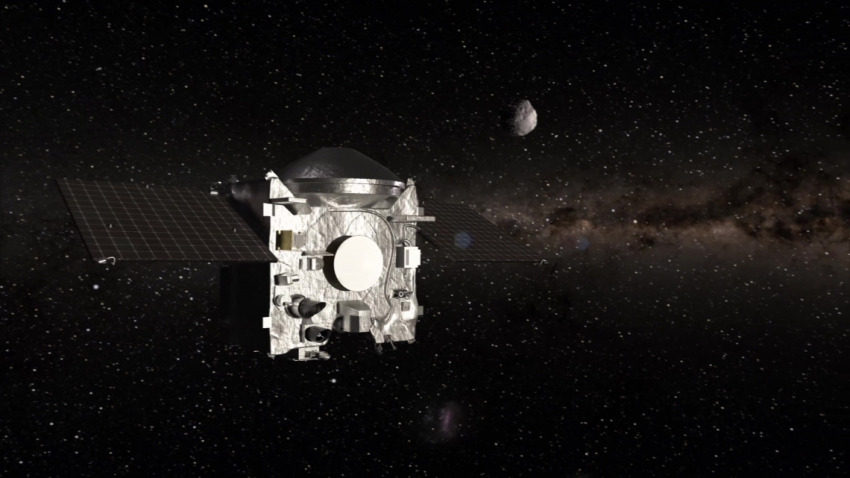
By Nick Prevenas, University Communications - October 27, 2021
The University of Arizona has once again been recognized as one of the world's top 100 research institutions by U.S. News & World Report.
UArizona ranked No. 99 out of 1,750 higher education institutions across 90 countries in the 2022 Best Global Universities ranking, released Tuesday. The university was No. 42 among universities in the U.S. and No. 22 among public universities.
"It is gratifying to see the University of Arizona listed alongside many of the world's premier academic research institutions," said University of Arizona President Robert C. Robbins. "Our university is home to many breathtaking scientific innovations, and it is upon this foundation that our faculty members seek to make further extraordinary discoveries."
U.S. News & World Report's Best Global Universities ranks colleges and universities in 43 separate subjects – up from 38 the year before. The University of Arizona earned a spot on 32 of the subject rankings lists.
UArizona earned its top placement in the space science category, placing No. 10 overall, No. 7 in the U.S. and No. 2 among public universities – all up one spot from last year's rankings. The university earned top marks for its research reputation in space sciences, along with the number of citations and publications by UArizona researchers.
The university's overall research reputation ranked No. 46 in the U.S. and No. 93 globally.
"The resolve and innovative spirit of researchers across campus are at the heart of the university's outstanding research reputation," said Elizabeth "Betsy" Cantwell, senior vice president for research and innovation. "From our commitment to building resilience amid a swiftly changing climate, to our leadership of NASA's groundbreaking OSIRIS-REx mission returning an asteroid sample to Earth, to our pioneering work understanding individualized health needs through the NIH-funded All of Us Program, University of Arizona research creates real-world solutions in nearly every scientific discipline."
UArizona earned top-100 global placements for its programs in geosciences (No. 26), arts and humanities (tied for No. 42), environment/ecology (No. 42), plant/animal sciences (No. 53) and biotechnology and applied microbiology (No. 86).
The eighth annual Best Global Universities rankings are produced to provide insight into how research institutions compare throughout the world. The rankings focus specifically on schools' academic research and reputation overall. To produce the global rankings, which are based on data and metrics provided by analytics company Clarivate, U.S. News & World Report uses a methodology that focuses on 13 indicators to measure research performance.
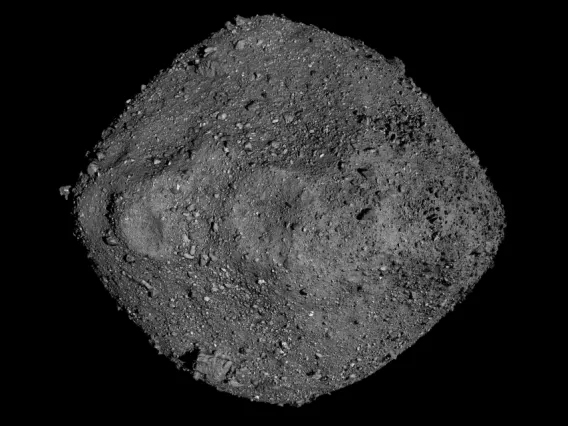
Highly Porous Rocks Responsible for Bennu's Surprisingly Craggy Surface
Using data from NASA OSIRIS-REx mission, a University of Arizona-led team of scientists concluded that asteroids with highly porous rocks, such as Bennu, should lack fine-grained material on their surfaces.
Highly Porous Rocks Responsible for Bennu's Surprisingly Craggy Surface
×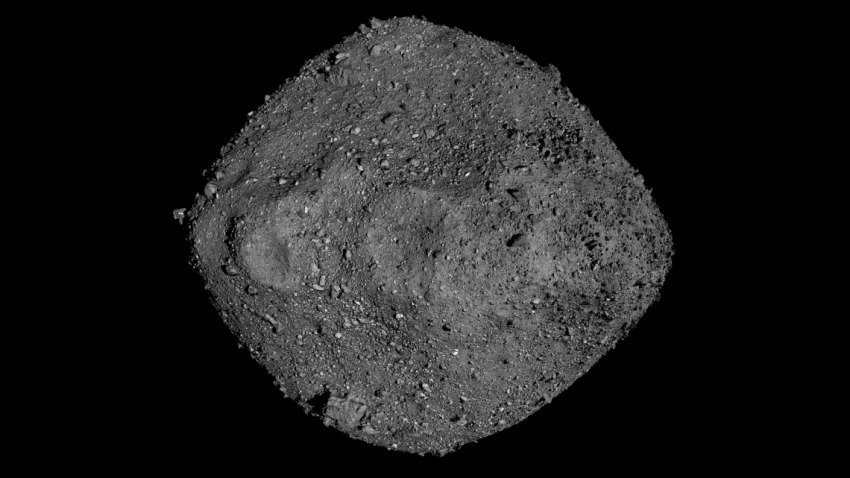
By Mikayla Mace Kelley, University Communications - October 6, 2021
Scientists thought asteroid Bennu's surface would be like a sandy beach, abundant in fine sand and pebbles, which would have been perfect for collecting samples. Past telescope observations from Earth's orbit had suggested the presence of large swaths of fine-grain material called fine regolith that's smaller than a few centimeters.
But when the spacecraft of NASA's University of Arizona-led OSIRIS-REx asteroid sample return mission arrived at Bennu in late 2018, the mission team saw a surface covered in boulders. The mysterious lack of fine regolith became even more surprising when mission scientists observed evidence of processes capable of grinding boulders into fine regolith.
New research, published in Nature and led by mission team member Saverio Cambioni, used machine learning and surface temperature data to solve the mystery. Cambioni was a graduate student at the UArizona Lunar and Planetary Laboratory when the research was conducted and is now a postdoctoral distinguished fellow in the Department of Earth, Atmospheric and Planetary Sciences at the Massachusetts Institute of Technology. He and his colleagues ultimately found that Bennu's highly porous rocks are responsible for the surface's surprising lack of fine regolith.
"The 'REx' in OSIRIS-REx stands for Regolith Explorer, so mapping and characterizing the surface of the asteroid was a main goal," said study co-author and OSIRIS-REx principal investigator Dante Lauretta, a Regents Professor of Planetary Sciences at the University of Arizona. "The spacecraft collected very high-resolution data for Bennu's entire surface, which was down to 3 millimeters per pixel at some locations. Beyond scientific interest, the lack of fine regolith became a challenge for the mission itself, because the spacecraft was designed to collect such material."
To collect a sample to return to Earth, the OSIRIS-REx spacecraft was built to navigate within an area on Bennu roughly the size of a 100-space parking lot. However, because of numerous boulders, the safe sampling site was reduced to roughly the size of five parking spaces. The spacecraft successfully made contact with Bennu to collect sample material in October 2020.
A Rocky Start and Solid Answers
"When the first images of Bennu came in, we noted some areas where the resolution was not high enough to see whether there were small rocks or fine regolith. We started using our machine learning approach to separate fine regolith from rocks using thermal emission (infrared) data," Cambioni said.
The thermal emission from fine regolith is different from that of larger rocks, because the former is controlled by the size of its particles, while the latter is controlled by rock porosity. The team first built a library of examples of thermal emissions associated with fine regolith mixed in different proportions with rocks of various porosity. Next, they used machine learning techniques to teach a computer how to "connect the dots" between the examples. Then, they used the machine learning software to analyze the thermal emission from 122 areas on the surface of Bennu observed both during the day and the night.
"Only a machine learning algorithm could efficiently explore a dataset this large," Cambioni said.
When the data analysis was completed, Cambioni and his collaborators found something surprising: The fine regolith was not randomly distributed on Bennu but instead was lower where rocks were more porous, which was on most of the surface.
The team concluded that very little fine regolith is produced by Bennu's highly porous rocks because these rocks are compressed rather than fragmented by meteoroid impacts. Like a sponge, the voids in rocks cushion the blow from incoming meteors. These findings are also in agreement with laboratory experiments from other research groups.
"Basically, a big part of the energy of the impact goes into crushing the pores restricting the fragmentation of the rocks and the production of new fine regolith," said study co-author Chrysa Avdellidou, a postdoctoral researcher at the French National Centre for Scientific Research (CNRS) – Lagrange Laboratory of the Côte d'Azur Observatory and University in France.
Additionally, cracking caused by the heating and cooling of Bennu's rocks as the asteroid rotates through day and night proceeds more slowly in porous rocks than in denser rocks, further frustrating the production of fine regolith.
"When OSIRIS-REx delivers its sample of Bennu (to Earth) in September 2023, scientists will be able to study the samples in detail," said Jason Dworkin, OSIRIS-REx project scientist at NASA Goddard Space Flight Center. "This includes testing the physical properties of the rocks to verify this study."
Other missions have evidence to confirm the team's findings. The Japanese Aerospace Exploration Agency's Hayabusa 2 mission to Ryugu, a carbonaceous asteroid like Bennu, found that Ryugu also lacks fine regolith and has highly porous rocks. Conversely, JAXA's Hayabusa mission to the asteroid Itokawa in 2005 revealed abundant fine regolith on the surface of Itokawa, an S-type asteroid with rocks of a different composition than Bennu and Ryugu. A previous study by Cambioni and his colleagues provided evidence that Itokawa's rocks are less porous than Bennu's and Ryugu's, using observations from Earth.
"For decades, astronomers disputed that small, near-Earth asteroids could have bare-rock surfaces. The most indisputable evidence that these small asteroids could have substantial fine regolith emerged when spacecraft visited S-type asteroids Eros and Itokawa in the 2000s and found fine regolith on their surfaces," said study co-author Marco Delbo, research director with CNRS, also at the Lagrange Laboratory.
The team predicts that large swaths of fine regolith should be uncommon on carbonaceous asteroids, which are the most common of all asteroid types and are thought to have high-porosity rocks like Bennu. In contrast, terrains rich in fine regolith should be common on S-type asteroids, which are the second-most common group in the solar system, and are thought to have denser, less porous rocks than carbonaceous asteroids.
"This is an important piece in the puzzle of what drives the diversity of asteroids' surfaces. Asteroids are thought to be fossils of the solar system, so understanding the evolution they have undergone in time is crucial to comprehend how the solar system formed and evolved," said Cambioni. "Now that we know this fundamental difference between carbonaceous and S-type asteroids, future teams can better prepare sample collection missions depending on the nature of the target asteroid."
The University of Arizona leads the OSIRIS-REx science team and the mission's science observation planning and data processing. NASA's Goddard Space Flight Center in Greenbelt, Maryland, provides overall mission management, systems engineering, and the safety and mission assurance for OSIRIS-REx. Lockheed Martin Space in Littleton, Colorado, built the spacecraft and provides flight operations. Goddard and KinetX Aerospace are responsible for navigating the OSIRIS-REx spacecraft. OSIRIS-REx is the third mission in NASA's New Frontiers Program, managed by NASA's Marshall Space Flight Center in Huntsville, Alabama, for the agency's Science Mission Directorate in Washington, D.C.
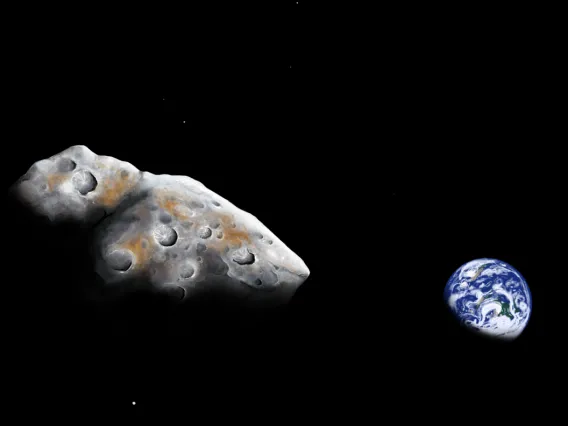
'Mini Psyches' Give Insights into Mysterious Metal-Rich Near-Earth Asteroids
New research into metal-rich asteroids reveals information about the origins and compositions of these rare bodies that could one day be mined.
'Mini Psyches' Give Insights into Mysterious Metal-Rich Near-Earth Asteroids
×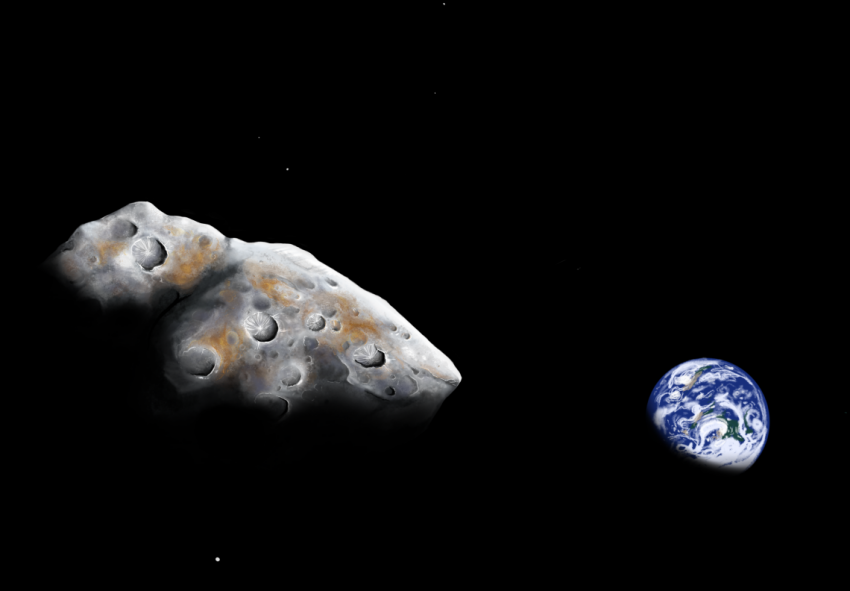
University Communications - October 1, 2021
Metal-rich near-Earth asteroids, or NEAs, are rare, but their presence provides the intriguing possibility that iron, nickel and cobalt could someday be mined for use on Earth or in Space.
New research, published in the Planetary Science Journal, investigated two metal-rich asteroids in our own cosmic backyard to learn more about their origins, compositions and relationships with meteorites found on Earth.
These metal-rich NEAs were thought to be created when the cores of developing planets were catastrophically destroyed early in the solar system's history, but little more is known about them. A team of students co-led by University of Arizona planetary science associate professor Vishnu Reddy studied asteroids 1986 DA and 2016 ED85 and discovered that their spectral signatures are quite similar to asteroid 16 Psyche, the largest metal-rich body in the solar system. Psyche, located in the main asteroid belt between the orbits of Mars and Jupiter rather than near Earth, is the target of NASA's Psyche mission.
"Our analysis shows that both NEAs have surfaces with 85% metal such as iron and nickel and 15% silicate material, which is basically rock," said lead author Juan Sanchez, who is based at the Planetary Science Institute. "These asteroids are similar to some stony-iron meteorites such as mesosiderites found on Earth."
Astronomers have been speculating as to what the surface of Psyche is made of for decades. By studying metal-rich NEAs that come close to the Earth, they hope to identify specific meteorites that resemble Psyche’s surface.
"We started a compositional survey of the NEA population in 2005, when I was a graduate student, with the goal of identifying and characterizing rare NEAs such as these metal-rich asteroids," said Reddy, principal investigator of the NASA grant that funded the work. "It is rewarding that we have discovered these 'mini Psyches' so close to the Earth."
"For perspective, a 50-meter (164-foot) metallic object similar to the two asteroids we studied created the Meteor Crater in Arizona," said Adam Battle, who is a co-author of the paper along with fellow Lunar and Planetary Laboratory graduate students Benjamin Sharkey and Theodore Kareta, and David Cantillo, an undergraduate student in the Department of Geosciences.
The paper also explored the mining potential of 1986 DA and found that the amount of iron, nickel and cobalt that could be present on the asteroid would exceed the global reserves of these metals.
Additionally, when an asteroid is catastrophically destroyed, it produces what is called an asteroid family – a bunch of small asteroids that share similar compositions and orbital paths.
The team used the compositions and orbits of asteroids 1986 DA and 2016 ED85 to identify four possible asteroid families in the outer region of the main asteroid belt, which is home to the largest reservoir of small bodies in the inner part of the solar system. This also happens to be the region where most of the largest known metallic asteroids including 16 Psyche reside.
"We believe that these two 'mini Psyches' are probably fragments from a large metallic asteroid in the main belt, but not 16 Psyche itself," Cantillo said. "It's possible that some of the iron and stony-iron meteorites found on Earth could have also come from that region in the solar system too."
The paper's findings are based on observations from the NASA Infrared Telescope Facility on the island of Hawaii. The work was funded by the NASA Near-Earth Object Observations Program, which also funds the NASA Infrared Telescope Facility.

Earth and Venus Grew up as Rambunctious Planets
What doesn't stick comes around: Using machine learning and simulations of giant impacts, researchers at the Lunar and Planetary Laboratory found that the planets residing in the inner solar systems were likely born from repeated hit-and-run collisions, challenging conventional models of planet formation.
Earth and Venus Grew up as Rambunctious Planets
×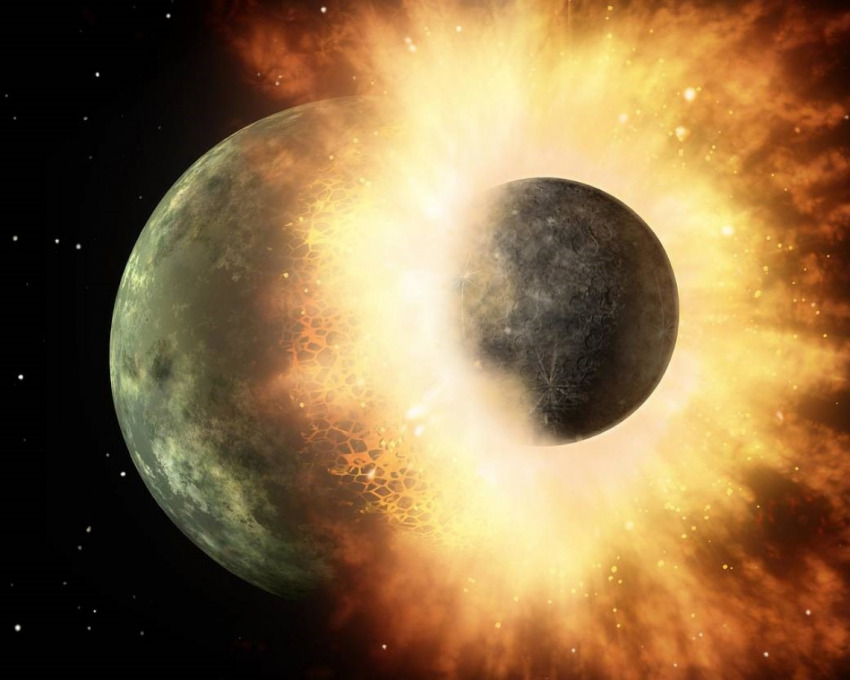
By Daniel Stolte, University Communications - September 23, 2021
Planet formation – the process by which neat, round, distinct planets form from a roiling, swirling cloud of rugged asteroids and mini planets – was likely even messier and more complicated than most scientists would care to admit, according to new research led by researchers at the University of Arizona Lunar and Planetary Laboratory.
The findings challenge the conventional view, in which collisions between smaller building blocks cause them to stick together and, over time, repeated collisions accrete new material to the growing baby planet.
Instead, the authors propose and demonstrate evidence for a novel "hit-and-run-return" scenario, in which pre-planetary bodies spent a good part of their journey through the inner solar system crashing into and ricocheting off of each other, before running into each other again at a later time. Having been slowed down by their first collision, they would be more likely to stick together the next time. Picture a game of billiards, with the balls coming to rest, as opposed to pelting a snowman with snowballs, and you get the idea.
The research is published in two reports appearing in the Sept. 23 issue of The Planetary Science Journal, with one focusing on Venus and Earth, and the other on Earth's moon. Central to both publications, according to the author team, which was led by planetary sciences and LPL professor Erik Asphaug, is the largely unrecognized point that giant impacts are not the efficient mergers scientists believed them to be.
"We find that most giant impacts, even relatively 'slow' ones, are hit-and-runs. This means that for two planets to merge, you usually first have to slow them down in a hit-and-run collision," Asphaug said. "To think of giant impacts, for instance the formation of the moon, as a singular event is probably wrong. More likely it took two collisions in a row."
One implication is that Venus and Earth would have had very different experiences in their growth as planets, despite being immediate neighbors in the inner solar system. In this paper, led by Alexandre Emsenhuber, who did this work during a postdoctoral fellowship in Asphaug's lab and is now at Ludwig Maximilian University in Munich, the young Earth would have served to slow down interloping planetary bodies, making them ultimately more likely to collide with and stick to Venus.
"We think that during solar system formation, the early Earth acted like a vanguard for Venus," Emsenhuber said.
The solar system is what scientists call a gravity well, the concept behind a popular attraction at science exhibits. Visitors toss a coin into a funnel-shaped gravity well, and then watch their cash complete several orbits before it drops into the center hole. The closer a planet is to the sun, the stronger the gravitation experienced by planets. That's why the inner planets of the solar system on which these studies were focused – Mercury, Venus, Earth and Mars – orbit the sun faster than, say, Jupiter, Saturn and Neptune. As a result, the closer an object ventures to the sun, the more likely it is to stay there.
So when an interloping planet hit the Earth, it was less likely to stick to Earth, and instead more likely to end up at Venus, Asphaug explained.
"The Earth acts as a shield, providing a first stop against these impacting planets," he said. "More likely than not, a planet that bounces off of Earth is going to hit Venus and merge with it."
Emsenhuber uses the analogy of a ball bouncing down a staircase to illustrate the idea of what drives the vanguard effect: A body coming in from the outer solar system is like a ball bouncing down a set of stairs, with each bounce representing a collision with another body.
"Along the way, the ball loses energy, and you'll find it will always bounce downstairs, never upstairs," he said. "Because of that, the body cannot leave the inner solar system anymore. You generally only go downstairs, toward Venus, and an impactor that collides with Venus is pretty happy staying in the inner solar system, so at some point it is going to hit Venus again."
Earth has no such vanguard to slow down its interloping planets. This leads to a difference between the two similar-sized planets that conventional theories cannot explain, the authors argue.
"The prevailing idea has been that it doesn't really matter if planets collide and don't merge right away, because they are going to run into each other again at some point and merge then," Emsenhuber said. "But that is not what we find. We find they end up more frequently becoming part of Venus, instead of returning back to Earth. It's easier to go from Earth to Venus than the other way around."
To track all these planetary orbits and collisions, and ultimately their mergers, the team used machine learning to obtain predictive models from 3D simulations of giant impacts. The team then used these data to rapidly compute the orbital evolution, including hit-and-run and merging collisions, to simulate terrestrial planet formation over the course of 100 million years. In the second paper, the authors propose and demonstrate their hit-and-run-return scenario for the moon's formation, recognizing the primary problems with the standard giant impact model.
"The standard model for the moon requires a very slow collision, relatively speaking," Asphaug said, "and it creates a moon that is composed mostly of the impacting planet, not the proto-Earth, which is a major problem since the moon has an isotopic chemistry almost identical to Earth."
In the team's new scenario, a roughly Mars-sized protoplanet hits the Earth, as in the standard model, but is a bit faster so it keeps going. It returns in about 1 million years for a giant impact that looks a lot like the standard model.
"The double impact mixes things up much more than a single event," Asphaug said, "which could explain the isotopic similarity of Earth and moon, and also how the second, slow, merging collision would have happened in the first place."
The researchers think the resulting asymmetry in how the planets were put together points the way to future studies addressing the diversity of terrestrial planets. For example, we don't understand how Earth ended up with a magnetic field that is much stronger than that of Venus, or why Venus has no moon.
Their research indicates systematic differences in dynamics and composition, according to Asphaug.
"In our view, Earth would have accreted most of its material from collisions that were head-on hits, or else slower than those experienced by Venus," he said. "Collisions into the Earth that were more oblique and higher velocity would have preferentially ended up on Venus."
This would create a bias in which, for example, protoplanets from the outer solar system, at higher velocity, would have preferentially accreted to Venus instead of Earth. In short, Venus could be composed of material that was harder for the Earth to get ahold of.
"You would think that Earth is made up more of material from the outer system because it is closer to the outer solar system than Venus. But actually, with Earth in this vanguard role, it makes it actually more likely for Venus to accrete outer solar system material," Asphaug said.
The co-authors on the two papers are Saverio Cambioni and Stephen R. Schwartz at the Lunar and Planetary Laboratory and Travis S. J. Gabriel at Arizona State University in Tempe, Arizona.
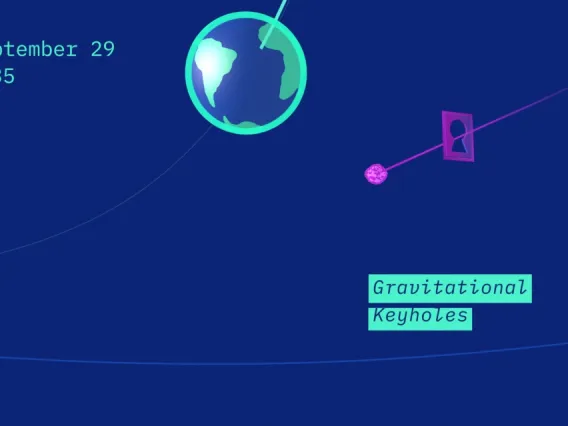
OSIRIS-REx Improves Understanding of Potentially Hazardous Asteroids
NASA and UArizona scientists were able to significantly reduce uncertainties about asteroid Bennu's orbit and determine the likelihood of the asteroid impacting Earth between now and the year 2300.
OSIRIS-REx Improves Understanding of Potentially Hazardous Asteroids
×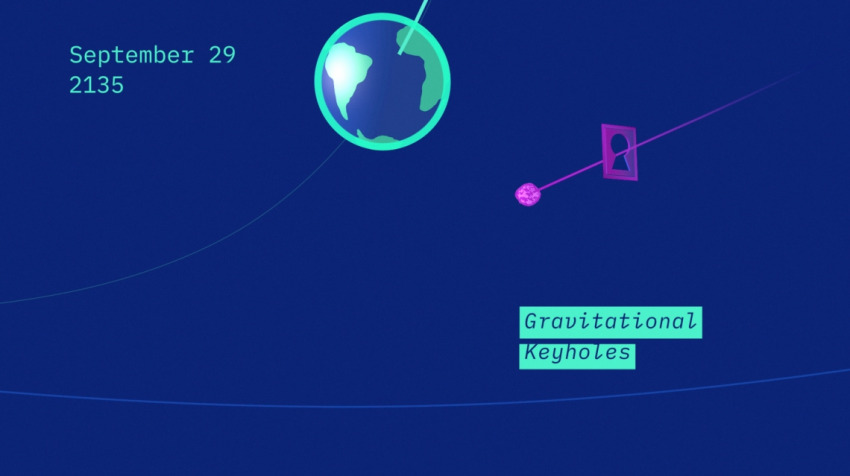
NASA and University Communications - August 11, 2021
In a study released in the journal Icarus today, NASA and University of Arizona researchers used precision-tracking data from the OSIRIS-REx spacecraft to better understand movements of the potentially hazardous asteroid Bennu. The findings confirm that Bennu has a significantly decreased risk of impacting Earth late in the next century, and improve our ability to predict orbits of many other asteroids.
Using NASA's Deep Space Network and a state-of-the-art computer model, scientists pinpointed Bennu's future orbits with unprecedented accuracy, effectively reducing the asteroid's orbit uncertainties to determine the total impact probability through the year 2300.
In 2135, asteroid Bennu will make a very close approach with Earth. Although the near-Earth object will not hit the planet at that time, scientists must understand Bennu's exact trajectory during that encounter in order to predict how Earth's gravity will alter the asteroid's path around the sun and affect its risk of Earth impact in the future.
Scientists were able to significantly shrink uncertainties about Bennu's orbit, determining its impact probability through the year 2300 is about 1 in 1,750, or 0.057%. The researchers were also able to identify Sept. 24, 2182 as the most significant single date, with an impact probability of 1 in 2,700, or about 0.037%.
"The orbital data from this mission helped us better appreciate Bennu's impact risk over the next couple of centuries and our overall understanding of potentially hazardous asteroids – an incredible result," said Dante Lauretta, OSIRIS-REx principal investigator and a professor in the Lunar and Planetary Laboratory at the University of Arizona.
Although the chances of hitting Earth are low, Bennu is still one of the two most hazardous known objects in the solar system, along with another asteroid called 1950 DA.
"NASA's Planetary Defense mission is to find and monitor asteroids and comets that can come near Earth and may pose a hazard to our planet," said Kelly Fast, program manager for NASA's Near-Earth Object Observations Program. "We carry out this endeavor through continuing astronomical surveys that collect data to discover previously unknown objects and refine our orbital models for them. The OSIRIS-REx mission has provided an extraordinary opportunity to refine and test these models, helping us better predict where Bennu will be when it makes its close approach to Earth more than a century from now."
Before leaving Bennu on May 10, 2021, OSIRIS-REx spent over two years in close proximity to the asteroid, gathering information about its size – about a third of a mile, or 500 meters, wide – as well as its shape, mass, and composition, spin and orbital trajectory. The spacecraft is on its way back to Earth with a bounty of dust, pebbles and small rocks collected from the asteroid's surface. OSIRIS-REx will deliver the sample to Earth on Sept. 24, 2023, for further scientific investigation.
"The OSIRIS-REx data give us so much more precise information, we can test the limits of our models and calculate the future trajectory of Bennu to a very high degree of certainty through 2135," said study lead author Davide Farnocchia of the Center for Near Earth Object Studies, which is managed by NASA's Jet Propulsion Laboratory in Southern California. "We've never modeled an asteroid's trajectory to this precision before."
Gravitational Keyholes
The precision measurements on Bennu help to better determine how the asteroid's orbit will evolve over time and whether it will pass through a "gravitational keyhole" during its close approach in the year 2135. These keyholes are areas in space that if passed through by Bennu at a certain time and location would set the asteroid on a path where Earth's gravitational pull could cause a potential future impact.
To calculate exactly where the asteroid will be during its 2135 close approach – and whether it might pass through a gravitational keyhole – Farnocchia and his team evaluated various types of small forces that may affect the asteroid as it orbits the sun. Even the smallest force can significantly deflect its orbital path over time, causing it to pass through or completely miss a keyhole.
Among those forces, the sun's heat plays a crucial role. As an asteroid travels around the sun, sunlight heats up the side facing it. As the asteroid spins, the heated side will cool down as it rotates away. As it cools, the surface releases infrared energy, which generates a small amount of thrust on the asteroid – a phenomenon called the Yarkovsky Effect. Over short timeframes, this thrust is minuscule, but over long periods, the effect on the asteroid's position builds up and can play a significant role in changing an asteroid's path.
"The Yarkovsky Effect will act on all asteroids of all sizes, and while it has been measured for a small fraction of the asteroid population from afar, OSIRIS-REx gave us the first opportunity to measure it in detail as Bennu traveled around the sun," said Steve Chesley, senior research scientist at JPL and study co-investigator. "The effect is equivalent to the weight of three grapes constantly acting on the asteroid – tiny, yes, but significant when determining Bennu's future impact risks over the decades and centuries to come."
The team accounted for many other perturbing forces as well, including the gravity of the planets, their moons and over 100 other asteroids; the drag caused by interplanetary dust; the pressure of the solar wind; and Bennu's particle-ejection events. The researchers even evaluated the force OSIRIS-REx exerted when performing its Touch-And-Go, or TAG, sample collection event on Oct. 20, 2020, to see how it might have slightly altered Bennu's orbit.
"The force exerted on Bennu's surface during the TAG event was tiny even in comparison to the effects of other small forces considered," said Rich Burns, OSIRIS-REx project manager at NASA Goddard Space Flight Center. "TAG did not alter Bennu's likelihood of impacting Earth in any meaningful way."
Tiny Risk, Huge Gain
Although a 0.057% impact probability through the year 2300 and an impact probability of 0.037% in 2182 are exceedingly low, the study highlights the crucial role that OSIRIS-REx operations played in precisely characterizing Bennu's orbit.
"The spacecraft is now returning home, carrying a precious sample from this fascinating ancient object that will help us better understand not only the history of the solar system but also the role of sunlight in altering Bennu's orbit since we will measure the asteroid thermal properties at unprecedented scales in laboratories on Earth," UArizona's Lauretta said.
The University of Arizona leads the science team and the mission's science observation planning and data processing. NASA's Goddard Space Flight Center in Greenbelt, Maryland, provides overall mission management, systems engineering and the safety and mission assurance for OSIRIS-REx. Lockheed Martin Space Systems in Denver built the spacecraft and is providing flight operations. Goddard and KinetX Aerospace are responsible for navigating the OSIRIS-REx spacecraft. OSIRIS-REx, which stands for Origins, Spectral Interpretation, Resource Identification, Security-Regolith Explorer, is the third mission in NASA's New Frontiers Program. NASA's Marshall Space Flight Center in Huntsville, Alabama, manages the agency's New Frontiers Program for the Science Mission Directorate in Washington, D.C.
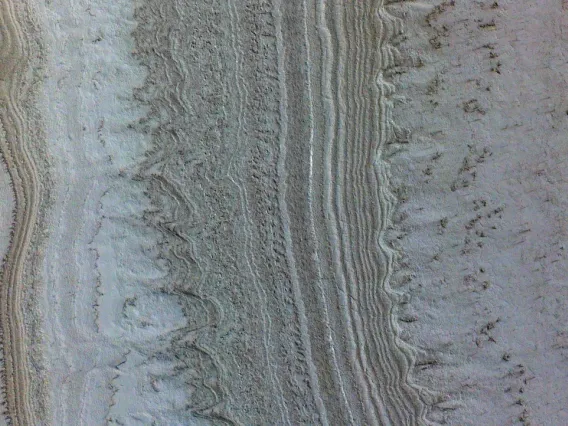
Mars Lake Hypothesis on Ice After Study Offers Different Explanation
Scientists have long debated what's under the surface of Mars' south pole. A new study points to clays being more likely than a subsurface lake.
Mars Lake Hypothesis on Ice After Study Offers Different Explanation
×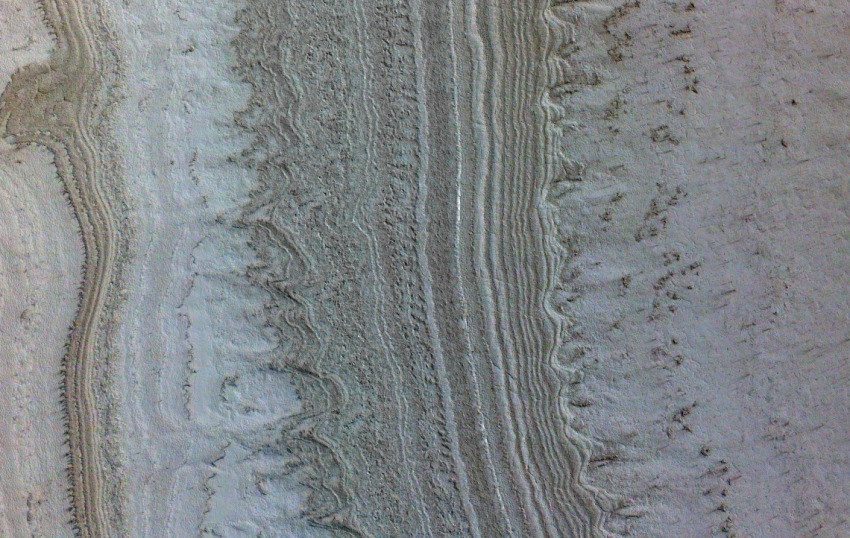
By University Communications and York University - July 29, 2021
For years, scientists have been debating what might lay under the Martian planet's south polar cap after bright radar reflections were discovered and initially attributed to water.
Now, a new study involving a researcher from the University of Arizona puts that theory to rest and demonstrates that another material is most likely the answer.
The research, published in Geophysical Research Letters and led by York University planetary scientists in Canada, uses multiple lines of evidence to show that smectites, a common type of clay, can explain all of the observations – putting the Mars lake theory on ice.
"Since being first reported as bodies of water, the scientific community has shown skepticism about the lake hypothesis," said principal investigator Isaac Smith, Canada Research Chair and assistant professor of earth and space science at York University. "And recent publications questioned if it was even possible to have liquid water."
Papers in 2018 and 2021 demonstrated that the amount of salt and heat required to thaw ice at the bottom of the polar cap was many times more than Mars provides, and recent evidence showing these radar detections are much more widespread – to places even harder to thaw ice – put the idea further into question.
The research team – which included Stefano Nerozzi, a postdoctoral fellow in the University of Arizona Lunar and Planetary Laboratory and Department of Geosciences, as well as researchers from Cornell, Purdue and Tulane universities – used experimental and modelling work to demonstrate that smectites can better explain the radar observations made by the MARSIS instrument aboard the European Space Agency's Mars Express orbiter. Further, they found spectral evidence that smectites are present at the edges of the south polar cap.
"Smectites are very abundant on Mars, covering about half the planet, especially in the Southern Hemisphere," said Smith. "That knowledge, along with the radar properties of smectites at cryogenic temperatures, points to them being the most likely explanation to the riddle."
"Based on observations, the first reason the bright reflectors cannot be water is because some of them continue from underground onto the surface. If that is the case, then we should see springs, which we don't," Nerozzi said. "Not only that, but multiple reflectors are stacked on top of each other, and some are even found right in the middle of the polar cap. If this were water, this would be physically impossible."
Experiments also measured the radar characteristics of hydrated smectites at room temperature and cryogenic temperatures. The radar characteristics in question are two numbers that represent the real and imaginary parts of the permittivity, which tells you about the material's electrical properties and response to the radio waves employed by radars. Both numbers are important for fully characterizing a material, but the 2018 study used modeling that included only the real part of the dielectric value, leaving out certain classes of materials from being considered – namely clays.
Once the experimental measurements were completed, data was evaluated using code. It was in these simulations that researchers found that unlike the original liquid water hypothesis, frozen clays have numbers just right to explain all the reflections.
Smectites are a class of clay that is formed when basalt – the volcanic rock that comprises most of Mars' surface – breaks down chemically in the presence of liquid water.
"Detecting possible clay minerals in and below the south polar ice cap is important because it tells us that the ice includes sediments that have interacted with water sometime in the past, either in the ice cap or before the ice was there," said Briony Horgan, co-author and associate professor of earth, atmospheric and planetary sciences at Purdue University. "So, while our work shows that there may not be liquid water and an associated habitable environment for life under the cap today, it does tell us about water that existed in this area in the past."
To support the new hypothesis, Smith conducted experiments in his lab with equipment designed for measuring dielectric values. To simulate the conditions beneath Mars' south polar cap as best as possible, his team froze the clays to minus 50 degrees Celsius and measured them again, something that had never been done before. Smith adds that the infrared absorptions attributable to these minerals are present in south polar orbital visible-near infrared reflectance spectra. Because these minerals are both present at the south pole and can cause the reflections, the team believes this to be a more viable scenario than the presence of liquid water. No salt or heat is required.
"We used our lab measurements of clay minerals as the input for a radar reflection model and found that the results of the model matched very well with the real, observed data," said Dan Lalich, postdoctoral researcher at the Cornell Center for Astrophysics and Planetary Science at Cornell University and second author on the study. "While it's disappointing that liquid water might not actually be present below the ice today, this is still a cool observation that might help us learn more about conditions on ancient Mars."
"We analyzed the MARSIS radar data and identified observations with high-power values at the base of the south polar layered deposits, both in the proposed lake region and elsewhere," said Jenny Whitten, co-author and planetary scientist in the Department of Earth and Environmental Sciences at Tulane University.
Putting the results in perspective Smith says the answer is clear.
"Now, we have the trifecta. One, we measured dielectric properties of materials that are known to exist over 50% of Mars' surface and found them to have very high values. Two, we modelled how those numbers would respond in Mars' south-polar conditions and found them to match the radar observations well. Three, we demonstrated that these minerals are at the south pole. Because the liquid water theory required incredible amounts of heat, which is six to eight times more than Mars provides, and more salt than Mars has, it was already implausible. Now, the clays can explain the observations with absolutely no qualifiers or asterisks."
